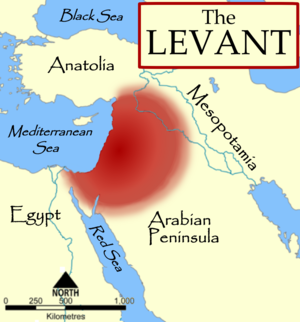I almost chose not to read Donald Grayson’s most recent book, Giant Sloths and Sabertooth Cats: Extinct Mammals and the Archaeology of the Ice Age Great Basin. Grayson is a long time skeptic of the hypothesis that man overhunted Pleistocene megafauna to extinction, and he has authored and co-authored a number of papers explaining his position. In my opinion overhunting by man is the only explanation for the extinction of Pleistocene megafauna that makes sense. I’ve read his papers and consider his arguments highly illogical and unfair. But I did purchase his book because I try to absorb all the knowledge I can about my favorite subject–the late Pleistocene ecology of North America. I don’t have to agree with an author about everything to enjoy their work. I saw his chapter on extinction was short, just a small portion of the book, and I assumed he would simply rehash his tired old case against overkill. However, I was shocked at the way he misrepresented the results of a paleoecological study. He implies the results of this study support climate change models of Pleistocene megafauna extinctions. In fact this paper specifically states the opposite.

Donald Grayson’s newest book. His chapter on extinction is marred by gross deception.

Donald Grayson is an archaeology professor at the University of Washington.
On page 287 of the above book, Grayson wrote “…paleoecologist Jacquelyn Gill and her colleagues took a close look at tiny bits of Ice Age history extracted from 3 lakes and marshes in New York and Indiana.” Grayson fails to mention the data from the lakes in New York was gathered in a study led by Guy Robinson (1). (I will number the studies mentioned in this blog post and list them below.) Guy Robinson’s team took samples of sediment from some New York lakes and marshes, radiocarbon dated different chronological layers of it, and measured and analyzed the volume of pollen, charcoal, and dung fungus spores in each layer. The volume of dung fungus spores is used as a proxy to estimate populations of megafauna. They determined local extinctions of megafauna were staggered throughout 2 thousand years, and they concluded this ruled out climate change as a cause of the megafauna extinctions. If climate change caused the extinctions, they believed the extinctions at these different sites would be simultaneous. Instead the local extinctions occurred at different times at different sites, and it appears as if nomadic humans were overhunting megafauna at 1 site, then moving on to another, though these local extinctions occurred shortly before the Clovis cultural era. Increases in charcoal while megafauna populations were declining is additional evidence of probable human impact. Jacquelyn Gill, the lead author of the paper (2) Grayson referred to in his book, details a similar study of an Indiana lake. The authors of this study also found that megafauna populations declined before the Clovis cultural era but also before climate caused changes in the local plant composition. They believe human impacts are still a “plausible” cause of megafauna extinction, and they wrote “our data thus rule out the hypothesis that (i) climate-forced changes in vegetation drove the megafaunal decline, and (ii) no-analogue plant communities were created by megaherbivory.” Megafauna became locally extinct here before the pollen evidence suggests changes in the plant community occurred. They believe humans can still be implicated in megafauna extinctions at this site because increases in charcoal indicated humans were setting fire to the landscape during the period of megafauna decline, and there is evidence of human butchery of mammoths in southeastern Wisconsin during this same time period, suggesting that humans were likely hunting them at this location as well.
It is very dishonest of Grayson to imply these studies support climate-change models of extinction when the authors of these studies specifically state the opposite. He should have at least informed his readers of their conclusions and explain why he has a different interpretation of the data. The authors of these studies do note that megafauna decline occurred during a warm phase of climate, but they believe, if climate played a role, it had to be some other mechanism besides climate-driven changes in the environment. The accepted logic behind climate change models of extinction is that changes in climate decreased the plant foods necessary to maintain viable populations of megaherbivores. These studies show this is not the case. Moreover, fossil coprolites show the plants Ice Age megafauna ate are still common on the landscape today, and isotopic studies indicate they were not picky feeders, but instead ate a wide variety of foods. I think the warm climate phase provided a greater variety of edible plant foods for humans, thus increasing human populations which in turn was detrimental to megafauna.
There are many regions in North and South America where the environment did not change substantially during the most recent glacial-interglacial transition including the pampas of Argentina, southern California, and southeastern North America, especially Florida and the coastal plain. Climate change models of extinction just don’t make sense in these regions. Most species of megafauna enjoyed continent wide distributions, and they endured 30 glacial-interglacial transitions over the past 2 million years without suffering extinctions, yet they did become extinct about the same time man appears in the archaeological record. This can’t be coincidence.
Grayson focuses his arguments against overkill on the Clovis blitzkrieg model of extinction. This model proposes humans rapidly overhunted megafauna to extinction within the 500 year period of the Clovis cultural era. There is another model of overkill: humans were responsible for overhunting megafauna, but it took place over several thousand years and also involved a change in fire regime and other human impacts. This is known as the protracted overkill model and it is the one I favor. Grayson ignores this model. He doesn’t acknowledge the likelihood that pre-Clovis humans impacted megafauna populations. I’m sure he would point out the lack of archaeological evidence for this. His main objection to the blitzkrieg model is also a lack of archaeological evidence…he believes there are not enough kill sites (direct evidence that humans killed a beast) to justify the overkill hypothesis. This objection is unreasonable. 99.999…etc% of the individuals of a species that ever lived left no fossil evidence at all. It is ridiculous to expect to find fossil evidence of the last individuals of a species that just happened to be killed by men. Moreover, Grayson never quantifies how many kill sites archaeologists would need to find before he would be convinced humans were responsible for the demise of the megafauna. He needs to put an exact number on it or cease his objections. Despite the odds against it, there are numerous kill sites and evidence of human-butchered megafauna bones. Grayson dismisses over half of them, sometimes unfairly, though sometimes his skepticism is warranted.
Grayson falsely claims the overkill hypothesis has “little going for it” and he sounds annoyed on pages 279 and 280 of his book when he laments its acceptance in the popular media. He might be annoyed because in recent years the overwhelming number of paleoecological and statistical studies suggest man at least played some role in megafauna extinctions. Grayson glosses over a statistical study led by G.W. Prescott (3) that determined both man and climate played a role in the end Pleistocene extinctions. But 2 recent studies of worldwide extinction chronology (4) (5) determined extinctions are more closely tied to human expansion than climate change. In the study led by C. Sandom they note extinctions have been severe in climatically stable regions. They write: “Human arrival was a necessary factor for extinctions, whereas climate variation was a contributory one, enhancing regionally the effects of anthropogenic impacts on additive rather than synergistic ways.”
References:
(1) Robinson, G.S. ; L.P Burney and D.A. Burney
“Landscape Paleoecology and Megafaunal Extinction in Southeastern New York”
Ecological Monographs 2005
(2) Gill, J.L.; J.W. Williams, S.T. Jackson, K.B. Lininger, and G.S. Robinson
“Pleistocene Megafauna Collapse, Novel Plant Communities, and Enhanced Fire Regimes in North America
Science 2009
(3) Prescott, G.W. et. al.
“Quantitative Global Analysis of the Role of Climate and People in Explaining Late Quaternary Extinctions”
PNAS 2012
(4) Aravjo, Bernardo et. al.
“Bigger Kill than Chill: the Uneven Roles of Humans and Climate on Late Quaternary Megafaunal Extinctions”
Quaternary International 2015
(5) Sandom, C. et. al.
“Global Late Quaternary Megafauna Extinctions Linked to Humans, not Climate Change”
Proceedings of the Royal Society 2014
http://rspb.royalsocietypublishing.org/content/281/1787/20133254















h(252)c(1)q(90)/363cfa1873573e20a45d25f3603a836d.jpg)